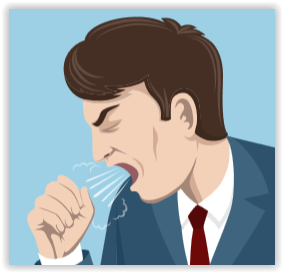What Was the Dirt on Pig-Pen?
THE SOURCE OF THE DUST IN YOUR OFFICE
 In the classic “Peanuts” comic strips, readers were introduced to an endearing cast of characters. Among them is Pig-Pen, a young boy who is constantly covered in a cloud of dust. We never learn where this dust comes from, though, and in the rare scenes where Pig-Pen is shown cleaning himself, he instantaneously attracts dust again.
In the classic “Peanuts” comic strips, readers were introduced to an endearing cast of characters. Among them is Pig-Pen, a young boy who is constantly covered in a cloud of dust. We never learn where this dust comes from, though, and in the rare scenes where Pig-Pen is shown cleaning himself, he instantaneously attracts dust again.
Tenants in an office environment will be familiar with this phenomenon: Desks and monitors seem to be perpetually covered in a fine layer of dust. And when some activity sends that dust airborne, complaints are sure to follow.
When employees complain of sneezing, coughing, itchy skin, itchy eyes, or upper respiratory problems, mold might be the suspected culprit. However, research from the Department of Labor’s Division of Occupational Safety and Health says that the real criminal is dust. A little dust might not seem like a big deal, but it’s a common indoor air quality problem in office spaces. Custodians are the first to take the blame when dust becomes commonplace in the office. Employees might complain to management or leave bits of paper on the ground to see if the custodians are really doing their job. While poor custodial services can negatively impact IAQ, they’re not always at fault.
Custodians can’t clean spaces covered in folders or stacks of paper, nor will they vacuum in places where boxes are stacked. Dust regularly accumulates on messy desks and carpets. As soon as someone shifts the boxes or drops a pile of folders on a workspace, an invisible plume of dust becomes airborne. Building Air Quality has conducted research with laser particle counts in office settings. We found “explosive increases” of airborne dust particles when occupants are in the office. Dust settles in the evenings, but if offices are cluttered, custodians cannot clean properly. When occupants come in to work, daily activity distributes the dust back into the air, and we see a dramatic decrease in the IAQ.
It is pretty much impossible to prevent dust altogether. Most office dust is a mix of soil from outside, dead skin cells, fibers from carpets and clothes, and tissue from papers. Air purifiers can help remove airborne dust, but it’s important for occupants to keep their workspaces clean so custodians can do their job and remove dust before it gets kicked up into the air.
